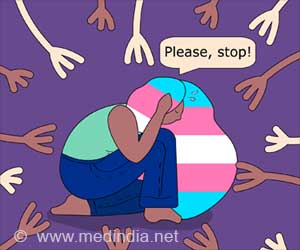Scene 1: 2000, A landlord visits a home in Lexilip, Co Kildare, to enquire about the rent and he finds the three middle aged sisters- Ruth, Catherine and Josephine Feeney and their elderly aunt, Frances Mulrooney dead. All four of them had given up eating and wanted to die together. The neighbors were not even aware that somebody had been living in the house.
Scene 2: August 2003, Agnes Lyons, 70, had been lying dead for up to a year in the home that she had been sharing with her brother Sonny (74 yrs) and her sister Mary Ellen (65 yrs). “It’s horrific that something like this could happen in this day and age and no one was aware of it, “said Harry Sheill of Alone, a organization involved in care of the elderly.Scene 3: January 2006, Evelyn Joel, 58, suffering from multiple sclerosis dies after being admitted to Wexford General hospital. This thin, comatose patient was barely visible under her bed sheets. She is said to have been lying in excrement and some sources even claim that there were maggots on her malnourished, dehydrated body. Her daughter Eleanor Joel and John Coston, Joel’s boyfriend are being investigated by the Health Service Executive for the negligence.
Although instances such as these continue to bring in mixed feelings of sympathy and empathy from the public, by and large, nothing much has changed in all these years. It only brings into focus the lacunae in elderly care, a subject often neglected in the social scenario. An investigation has been ordered by the Health Service Executive to probe into the cause of her death.
If not for the initiative of Evelyn’s friend, a distressed, angry middle-aged woman, determined to bring the issue to the spotlight, none of us would be aware of such an incident. She rocked into the offices of The Echo, Enniscorthy, Co Wexford to ensure provision of justice to her friend’s soul. She was deeply touched when she saw her friend in the hospital. “There was nothing of her in the bed; she looked 95. Her throat was cracked from dehydration”, she told The Echo.
According to official sources, Evelyn is said to have died on Saturday. On the 1st of January 2006, Dr. Declan Forde was called in to attend this victim of neglect. Soon, an ambulance arrived. The paramedical staff came in and soon rushed out to wear masks before they reentered her room. The responsibility was soon handed over to the gardai that arrived later on.
According to witnesses, she is said to have been lying in “absolutely horrendous circumstances”. She weighed roughly about 4½ stone. No form of medical care had been instituted to her over the past 6 moths. Her brother Tom Connolly and sisters Maureen Condon, Margaret Byrne and Kathleen Thomas were refused admission into the house, to visit her room.
Eleanor Joel, 31, the victim’s daughter, has something totally different to say. Evelyn is said to have refused to eat or leave her bedroom ever since her husband Alfie Joel, died in December. “I didn’t realize she was deteriorating badly until New Year’s Eve. I wanted to contact a doctor, but my mother would say she didn’t want help. She would tell me to leave it alone. She would say, ‘I don’t want help. I don’t want to go to a nursing home. I don’t want to see doctors and I don’t want nothing or nobody. I did my best. I couldn’t do any more and I had no help. I did it all on my own. I would have allowed her siblings to see her had they visited us,” she said.
The contact between Evelyn and other local health agencies is currently being investigated. This incident has for the first time proved that there is a disparity in the health care access even in the so-called developed countries. If you are still under the impression that something like this does not happen very frequently, you are probably mistaken.
“We don’t know what led to this woman’s tragic death, but in general terms, the cases that come to the public’s attention are just the tip of the iceberg. People assume that families are the safest place, that offspring or siblings won’t harm or neglect their own, but it is frightening what can happen. When I was nursing, I came across a person who had been put in the family shed, and old people who were locked in rooms for hours,” said Mandy Phelan, Joint coordinator of public health nursing, University College Dublin.
“There are sad cases out there. We receive nearly 2000 calls per year. Most of those who make contact are lonely, but 17% have family problems and 9% have reported fear or abuse. We have been contacted by elderly people who were pressured into signing over their homes to relatives on the basis that they would be looked after. They were then stuck in a back room and not cared for properly”, said Mary Nally, Chief executive, Senior Helpline, a voluntary organization.
In view of the above situation, it is high time that a few questions are raised regarding the inhumane treatment offered to the elderly. At the outset, an initiative has to be taken to identify the level of awareness related to the vulnerability of the aging population. The second task is to explore the depth of association between vulnerable individuals and service providers. The third and the most challenging task is however to identify any inadequacy in the above two systems, take appropriate plans to rectify the defect and finally to ensure effective implementation of the proof read system.
In some families, the family members even deny or restrict access to patients in need and under most circumstances much time is wasted circumventing this barrier before any active supportive services can be provided. “You have to negotiate and sometimes fight with some families to get in the front door. The constitution gives primacy of rights to the family and private property, but these rights should not be absolute. There needs to be legal support for community nurses and social workers to cross the family threshold and make an assessment in the case of a vulnerable adult”, agrees Mick Loftus, a practicing General Physician.
Turning on to the other side, it is also acceptable that issues such as these are far more complicated than what is currently foreseen. The unstable health condition of the sick and old poses significant constraints on the health assessment. It is hard to differentiate if a condition is due to advancing age and its associated problems or is due to lack of proper care and attention.
In some cases, the family members might be striving hard to do all that they can. They may not avail a specific treatment either due to poor awareness or due to confusion. This can lead to a rapid deterioration in the health status of the aged, yielding a totally different representation of the actual scenario. In most instances, even when caring neighbors and welfare professionals are readily available nothing much has been achieved.
“How can we criticise families that are struggling to care for elderly relatives? Many are at the end of their tether, and unable to cope. It is easy to be critical, but caring is a very tough role. Let us not rush to judge when we don’t know all the facts,” argues in support of the family members.
Much said and nothing done, a radical change in the thought process, an increased level of social responsibility and individual commitment can alone resolve at least a few of such prevailing inadequacies in care of the aging population.
Take Home Message:
Never lose sight of the fact that old age needs so little but needs that little so much. ~Margaret Willour







